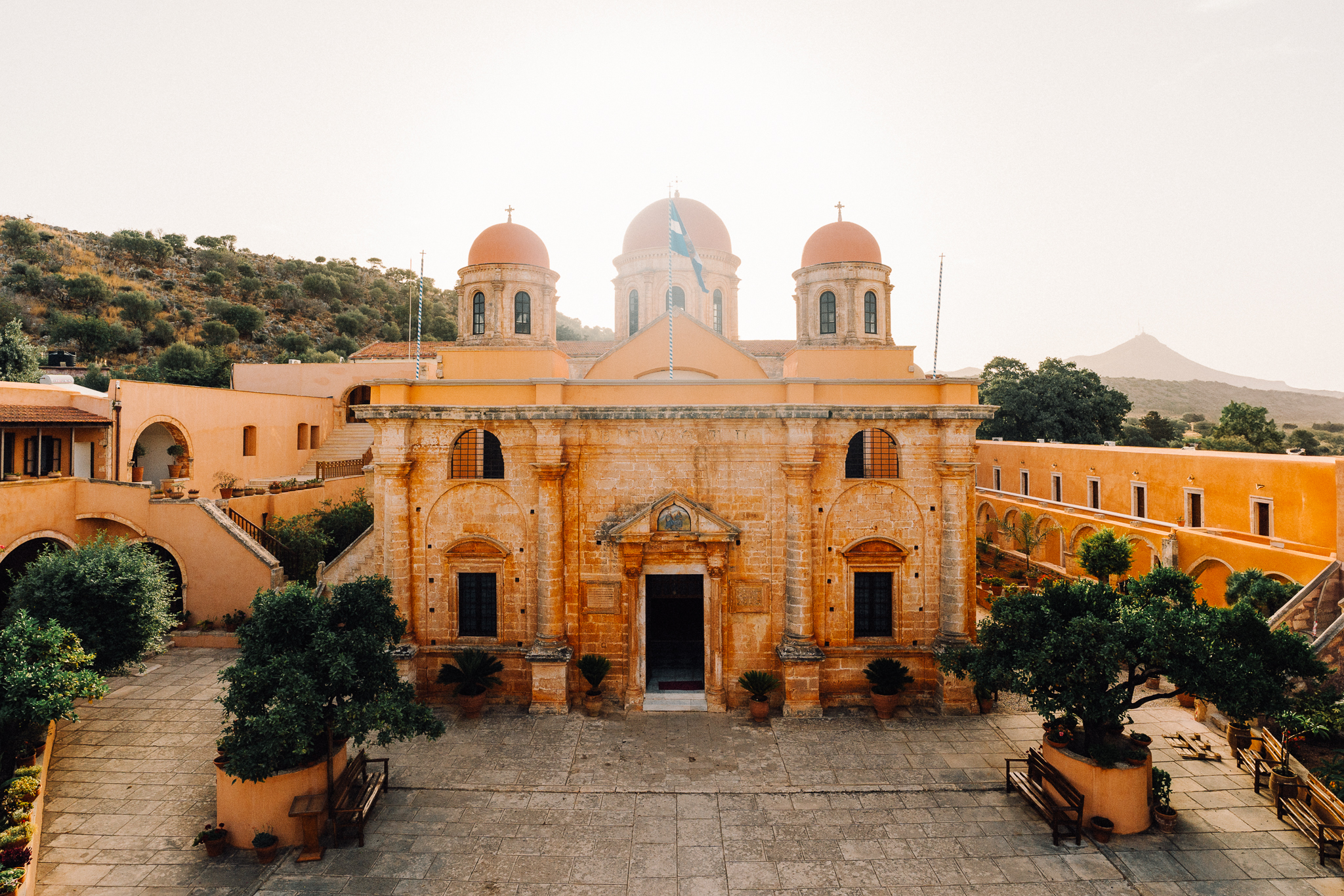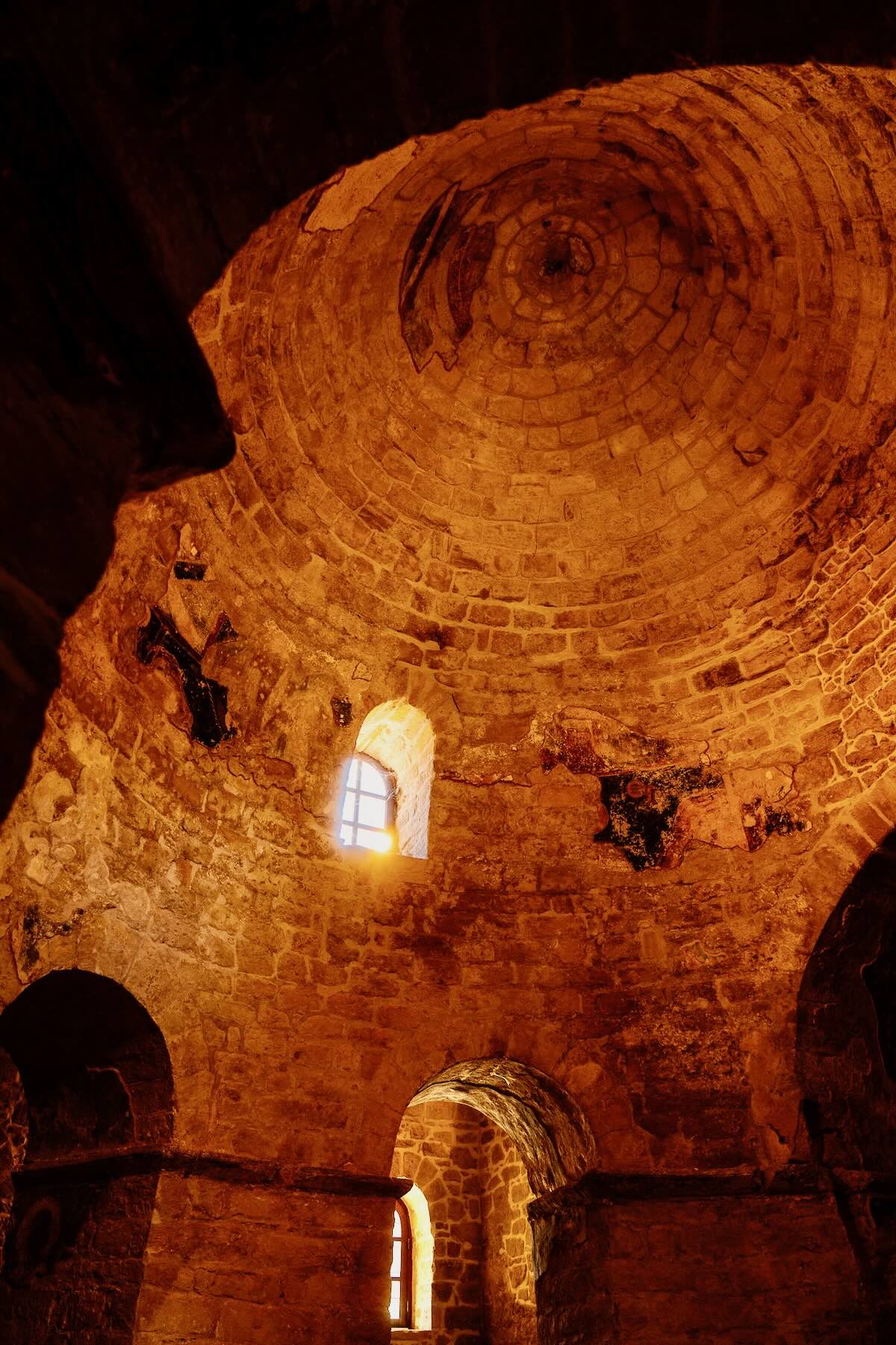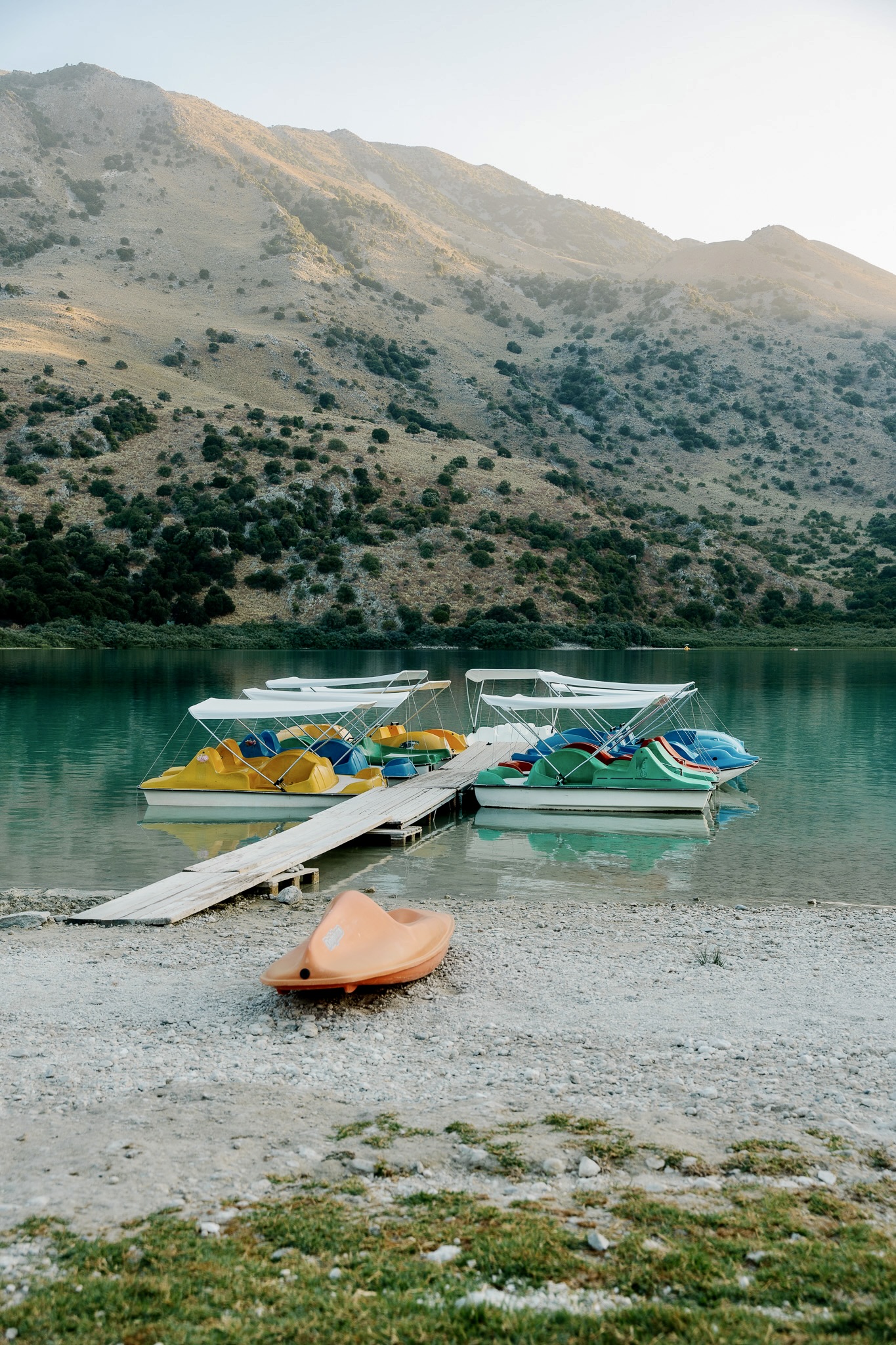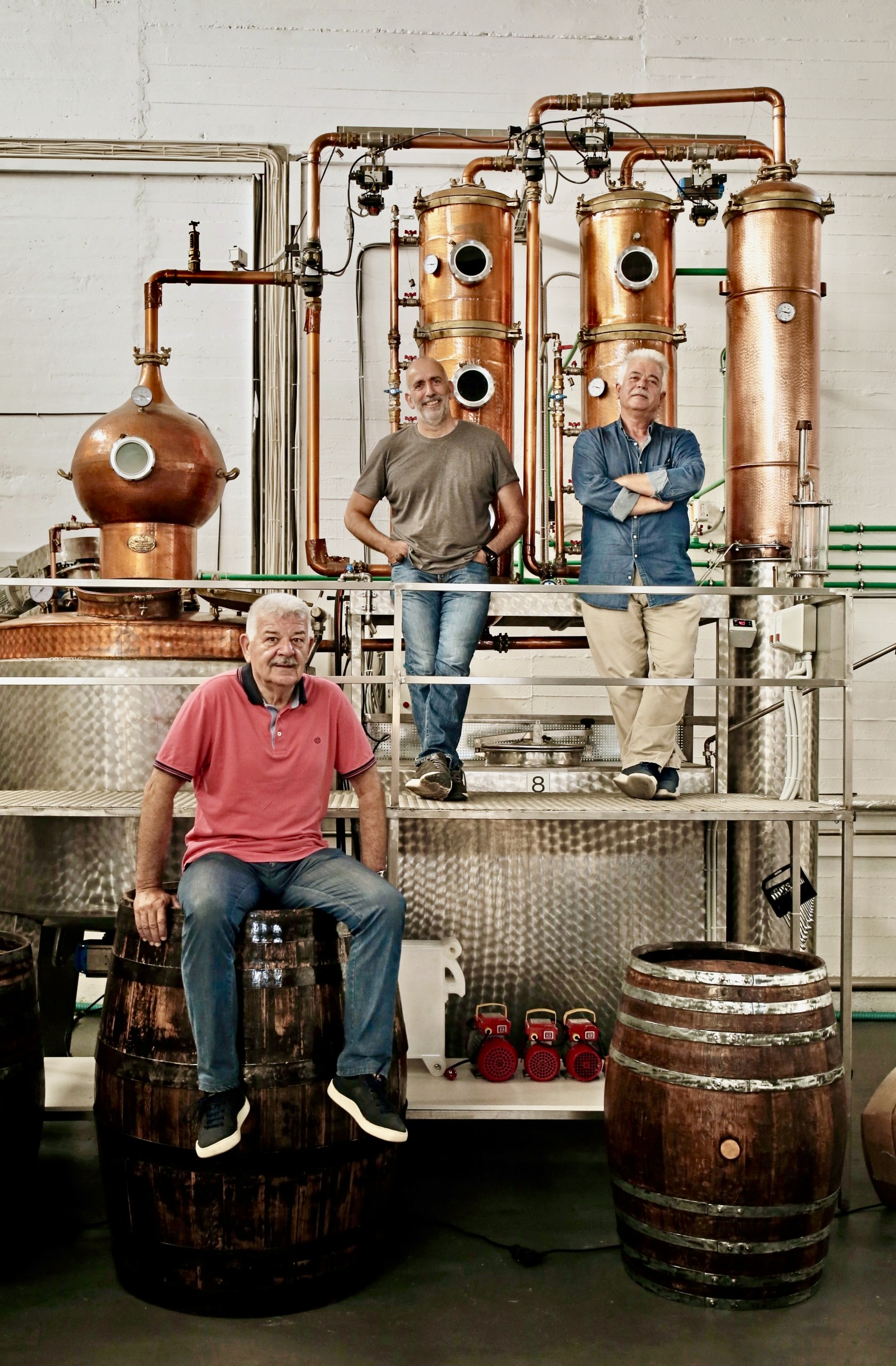Yes, it features charming alleyways and untamed natural beauty, but Chania also holds some of Crete’s most distinctive monasteries, remarkable for both their architectural and artistic elements. The monasteries in the Chania region trace their origins through various phases of Christianity’s evolution here, offering visitors deep insights into Crete’s religious heritage and showcasing a unique monastic aesthetic rarely found elsewhere in Greece.
Holy Trinity Monastery of Tzagarolon
With roots in the Venetian period, the Holy Trinity Monastery (Agia Triada Tzagarolon) stands as a significant Patriarchal and Stavropegic Monastery in Crete. Founded by hieromonk Jeremiah Tzagarolos, who led its reconstruction, the monastery flourished until the Ottoman conquest. During the 1821 Revolution, it was completely destroyed along with its precious relics. The monastery served as a German ammunition depot during World War II but is now fully restored and open to visitors.
Gouverneto Monastery
Built between 1537 and 1548, Gouverneto Monastery sits close to Agia Triada Tzagarolon. Despite extensive damage throughout its history, it has remained continuously inhabited and operational. Though little remains of its fortress-like character, the monastery shows Mannerist influences with unique sculptural forms unseen in similar monuments. Nearby stands the Katholiko Monastery, linked to Saint John the Hermit.
Rotunda of Archangel Michael in Kolympari
As the most distinctive Early Christian church-baptistery from the 6th century BC and one of Western Crete’s most remarkable monuments, the Church of Archangel Michael in Episkopi is known as the Rotunda for its rare architectural style. Divided into chambers connected to the central circular space, the church features a built Holy Table and unique cross-shaped baptismal fonts. Its walls display frescoes dating from the Iconoclastic period through the 14th century. The church played a role in the 1821 Revolution and underwent complete restoration in 2015 for the Pan-Orthodox Council.
Monastery of Saint John or Katholiko Monastery
The “Katholiko,” located near and belonging to Gouverneto Monastery, about twenty kilometers from central Chania, is associated with Saint John the Hermit and serves as a worship space for local ascetics, as its name suggests. This remarkable church, built from carved stone within a cave, creates an extraordinary sense of isolation and contemplation. Its courtyard rests on vaults, and around 1600 AD, Jeremiah Tzagarolos made significant modifications, including a bridge connecting the church to the opposite side, giving it the impressive form it maintains today.
Monastery of Gonia (Kolymbari)
The Monastery of Gonia, near Kolymbari, is one of the largest and best-preserved monasteries in Crete. Built between 1618-1637, it has a fortress-like structure and a tripartite katholikon dedicated to the Guide (Odigitria). The monastery flourished during the Venetian period, but suffered looting during the Turkish conquest. Its museum hosts valuable icons and manuscripts, such as the Crucifixion, Saint Nicholas (1637), and the Transfiguration (15th century). The monastery became a center of attraction for hermits and maintained its cultural heritage despite the destruction. Within its grounds, the Ecclesiastical Museum offers visitors a chance to explore an impressive collection of sacred treasures.
Monastery of Chrysoskalitissa
Perched on a rock with a view of the Libyan Sea, the Monastery of Chrysoskalitissa is near the famous Elafonissi. Its name comes from the legendary “golden staircase” that only the truly faithful are said to see. The church, built in 1894, replaced an earlier cave church. In the katholikon, there is the miraculous icon of the Dormition of the Virgin, dating to the 17th century. The monastery also houses an ecclesiastical and folkloric museum. Dedicated to the Dormition of the Virgin, it celebrates every August 15, attracting large crowds. Its simple beauty and idyllic setting make it an ideal destination for contemplation and awe.
Monastery of Chrysopigi
The Monastery of Chrysopigi, near Chania, was founded in the 16th century by Ioannis Chartophylakas and dedicated to the Virgin Life-Giving Spring. During the Venetian rule, it was an important spiritual center. It was renovated in 1848 after suffering considerable damage during the Ottoman occupation. During World War II, the Germans used the monastery and destroyed parts of it. In 1976, it became a women’s monastery, with the nuns restoring it and promoting tradition. Today, the nuns are involved in arts, producing organic products, and social actions. The monastery also houses an Ecclesiastical and Folkloric Museum.
Monastery of Agia Kyriaki
The Monastery of Agia Kyriaki is located near Varypetro, in a beautiful area with a protected forest and a small gorge. The monastery, which was in ruins until 1992, was restored and is now a vibrant and historical site. The church is a single-aisled structure dedicated to the Transfiguration of Christ, and it also celebrates Saint Kyriaki. The monastery hosts the Center for Orthodoxy and Ecology of the Monastery of Chrysopigi, where environmental programs are carried out. A notable feature is the restored 16th-century olive press, which today serves as the monks’ refectory. During the Turkish occupation, the monastery served as a refuge for revolutionaries and hosted a significant Pan-Cretan assembly in 1866 for the union of Crete with Greece.
Church of the Transfiguration of the Savior
Perched on a rocky hill near the Monastery of Agia Kyriaki, and close to the ruins of the Byzantine castle “Kastellos,” lies a cluster of monastic buildings that blend seamlessly with the breathtaking natural landscape of the Chania region. Among them is the Monastery of the Transfiguration of the Savior, which was inaugurated by the Ecumenical Patriarch in September 2012.
Every year, on August 6th, the Feast of the Transfiguration, the monastery becomes the center of grand celebrations, honoring this pivotal day in the Orthodox Christian calendar.
Monastery of Agios Georgios in Karidi
The Monastery of Agios Georgios in Karidi is a unique example of folk architecture in Chania. After years of abandonment, it was restored in 1996 and operates again. It stands out for its impressive olive press with 12 arches and four olive mills, indicating the large quantities of olive oil produced in the area. The monastery was founded by monks from the Holy Trinity of Tzagarolon after the local inhabitants, suffering under Ottoman rule and heavy taxation, donated the church of Saint George. Over time, the monastery acquired great wealth through donations, even from Turks who honored Saint George. Today, it stands as a cultural and religious landmark of the region.
Chania Metropolitan Church (Trimartyri)
The Cathedral of Chania, commonly referred to as Panagia Trimartyri, takes its name from its distinctive design as a three-aisled basilica. Each aisle is dedicated to a different patron: the central aisle to the Presentation of the Virgin Mary, the northern aisle to Saint Nicholas, and the southern aisle to the Three Hierarchs. The Cathedral of the Presentation of the Virgin Mary, also known as the Metropolitan Church of Chania, is located on Halidon Street in the heart of the old town. It was built on the site of a 14th-century church, and during the Ottoman period, it was converted into a soap factory, with the bell tower replacing the cauldron used for soap production. The church, in the form of a three-aisled basilica, is adorned with frescoes. The Metropolitan Church celebrates on November 21st, the feast day of the Presentation of the Virgin Mary.
Agioi Anargyroi Church
The Agioi Anargyroi Church, dating back to the 13th century, is one of the few churches in Chania that remained Christian during the Ottoman period and was used as a cathedral until 1859. It is located in the old Christian district of Chania. The church is three-aisled, with the northern aisle dedicated to the Agioi Anargyroi, the southern aisle to Agios Haralambos, and the central aisle to Agios Artemios. The church houses two important icons: the Dormition of the Virgin Mary, by the Cretan School of Damaskinos, and the Last Judgment, from the Venetian period.
Agios Nikolaos Church
The Church of Saint Nicholas, regarded as one of the most beautiful in Crete, is situated in the square of Splantzia in Chania. Originally built around 1320, it was transformed into a mosque during the Ottoman occupation, when an impressive minaret, standing approximately 34 meters tall, was added. Although its conical roof is no longer intact, the minaret remains a striking feature to this day. Uniquely, this is the only church in Greece to combine a bell tower with a minaret.
Read also:
First Time in Chania? Here’s What Not to Miss
















